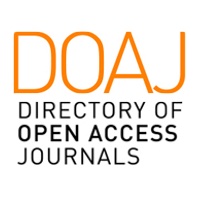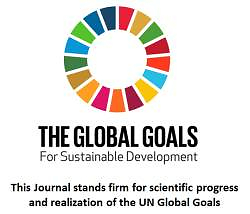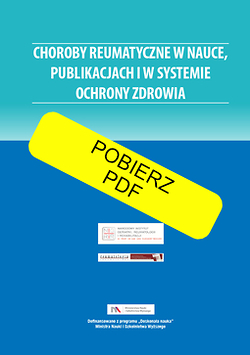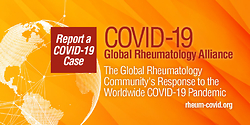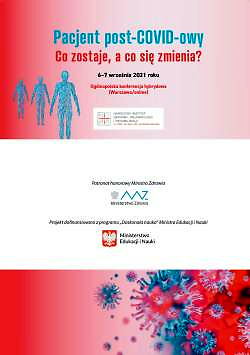|
1/2007
vol. 45
Case report
Cardiac myxoma as a cause of pseudovasculitis. A case report
Elżbieta Życińska-Dębska
,
Reumatologia 2007; 45, 1: 50–52
Online publish date: 2007/03/12
Get citation
Introduction
Vasculitides are a heterogeneous group of diseases of various etiology but akin in many aspects of their clinical picture. Differential diagnosis of vasculitis should include pseudovasculitis, i.e. symptoms and signs similar to vasculitis resulting from disorders primarily affecting other organs. Cardiac myxoma is one of the causes of pseudovasculitis. Myxoma is a benign tumour, commonly located in the heart. The tumour is relatively rare and its incidence remains unknown. Myxoma of the heart is most common in patients aged between 30 and 60. In almost all cases the tumour is located in the left atrium, and only in 5% of cases is it located in the ventricle. Typical myxoma is a single branched tumour with diameter from a few millimetres to 10 cm. The tumour usually grows from the intraatrial septum in close vicinity to the oval aperture [1]. Myxoma of the heart may have a mechanical effect on haemodynamic cardiac function, may be a source of clotting or infection or may lead to development of systemic alterations [2, 3]. The latter are believed to result from secretion of proinflammatory mediators by the tumour [4, 5]. Chronic inflammatory illness especially in the form of pseudovasculitis is one of the systemic complications associated with cardiac myxoma. The present report reviews a case of myxoma of the left atrium with symptoms and signs mimicking vasculitis.
Case report
A female patient aged 49 was admitted to the Department of Internal Medicine and Rheumatology from the Internal Medicine Ward of the regional hospital in order to continue diagnostics of unclear symptoms and signs. For about one year, the patient had suffered from weakness, intolerance of physical exercise, enhanced sweatness and slightly increased body temperature. Laboratory evaluation revealed enhanced erythrocyte sedimentation rate and anaemia. These symptoms and signs were presented at admission. Additionally, the patient had pain of the knees, especially the right one, neurological signs of mild right side paralysis and infrequent cardiac palpitations. She suffered from posttraumatic epilepsy and had been receiving antiepileptic medications. Concomitant disorders included hypertension, varicose veins of the lower extremities with chronic venous failure and mild depression. A few years before admission, she had been operated on due to nodular goiter with hyperthyroidism. Physical examination at admission revealed mild livedo reticularis on almost all the body, oedema of the calf and varicose veins. The body temperature was 37,3°C. Laboratory tests revealed enhanced erythrocyte sedimentation rate (180/200 mm/1-2 hr), syderopenia, anaemia (haemoglobin 9,4 g/dl, erythrocyte count 4,01x106/µl), increased thrombocyte count (461x103/µl). Serum C-reactive protein level was 19,8 mg/dl. Other results including antinuclear antibodies and antibodies against native DNA were normal. Bone marrow smear, chest x-ray, ultrasound examination of the abdomen and thyroid gland were normal. A small cyst of the liver was discovered in ultrasound examination and confirmed with computer tomography. No alterations were detected with upper alimentary tract endoscopy and colonoscopy, or with gynaecological, opthalmological, laryngological, neurological and psychiatric examination. Electrocardiographic recordings were normal but in leads III and V5-V6 a slight negative depression of the T wave was found. Ultrasound cardiac examination revealed a structure sized 60x34 mm in the left atrium, ballotting to the left ventricle with the heart rate and hanging on a 20 mm long stem. It looked like myxoma or a well-bound moveable clot. The consulting cardiac surgeon decided on the need for urgent surgical management of the patient. She was operated on and open heart surgery with extracorporeal circulation was performed. The tumour, sized 3x4cm, was totally removed. The postsurgical healing was uncomplicated. One month after the surgery the patient was admitted once again to the hospital. She was unsymptomatic, laboratory inflammatory indices were normal or almost normal (erythrocyte sedimentation rate 32/69 mm/1-2 hr, haemoglobin level 11,2 g/dl, erythrocyte count 4,27x106/µl). Cardiac ultrasound evaluation revealed a slight recurrent flow through the mitral valve.
Discussion
Symptoms of cardiac myxoma are classified into: those resulting from disturbed blood flow in the heart, those resulting from embolisation and systemic symptoms. The last ones can mimic systemic inflammatory disease of the connective tissue, especially vasculitis [6, 7, 8]. Some of them are caused by secretion of proinflammatory cytokines (interleukin-6) by the tumour [4]. Proinflammatory mediators secreted by the tumour may be responsible for numerous symptoms as well as laboratory test alternations, including anaemia and detected in some patients with myxoma: high titer of antinuclear antibodies, ANCA or anti-ds-DNA antibodies [1, 2, 9-12]. These findings indicate the need for careful evaluation of all patients presenting symptoms of systemic vasculitis. Pseudovasculitis is a rare cause of the symptoms but in most of these cases the cause of the sickness is treatable [7, 13, 14]. This leads to complete healing of the patient and avoids relatively toxic immunosuppressive management.
References
1. Sack KE. Mimickers of vasculitis. In: Arthritis and allied conditions. Koopman WJ (ed.). Lippincott Williams and Wilkins, Philadelphia 2001; 1711-35. 2. Pyne D, Barakat K, Rothman MT. Getting to the heart of the matter. Ann Rheum Dis 1999; 58: 332-3. 3. Gravallese EM, Waksmonski C, Winters GL, et al. Fever, arthralgias, skin lesions, and ischemic digits in a 59-year-old man. Arthritis Rheum 1995; 38:1161-8. 4. Mendoza CE, Rosado MF, Bernal L. The role of interleukin-6 in cases of cardiac myxoma. Clinical features, immunologic abnormalities, and a possible role in recurrence. Tex Heart Inst J 2001; 28: 3-7. 5. Seguin JR, Beigbeder JY, Hvass U, et al. Interleukin 6 production by cardiac myxomas may explain constitutional symptoms. Interleukin 6 production by cardiac myxomas may explain constitutional symptoms (letter). J Thorac Cardiovasc Surg 1992; 103: 599-600. 6. Hamuryudan V, Ozdogan H, Yazici H. Other forms of vasculitis and pseudovasculitis. Baillieres Clin Rheumatol 1997; 11: 335-55. 7. Thomas MH. Myxoma masquerading as polyarteritis nodosa. J Rheumatol 1981; 8: 133-7. 8. Leonhardt ET, Kullenberg KP. Bilateral atrial myxomas with multiple arterial aneurysms-a syndrome mimicking polyarteritis nodosa. Am J Med 1977; 62: 792-4. 9. Kuropatnicka H., Włodarczyk A., Kuśnierz B. Śluzak lewego przedsionka przyczyną anemii – opis przypadku klinicznego. Lekarz 2006; 66: 74-6. 10. Nishio Y, Ito Y, Iguchi Y, et al. MPO-ANCA-associated pseudovasculitis in cardiac myxoma. Eur J Neurol 2005; 12: 619-20. 11. Byrd WE, Matthews OP, Hunt RE. Left atrial myxoma presenting as a systemic vasculitis. Arthritis Rheum 1980; 23: 240-3. 12. Hovels-Gurich HH, Seghaye MC, Amo-Takyi BK, et al. Cardiac myxoma in a 6-year-old child - constitutional symptoms mimicking rheumatic disease and the role of interleukin-6. Acta Paediatr 1999; 88: 786-8. 13. Pfammatter JP, Iff T, Schupbach P. Imitation of a chronic recurrent inflammatory illness by cardiac myxoma. Eur J Pediatr 1996; 155: 637-9. 14. Abraham Z, Rozenbaum M, Rosner I et al. Cutaneous eruption in a patient with cardiac myxoma. J Dermatol 1995; 22: 276-8.
Copyright: © 2007 Narodowy Instytut Geriatrii, Reumatologii i Rehabilitacji w Warszawie. This is an Open Access article distributed under the terms of the Creative Commons Attribution-NonCommercial-ShareAlike 4.0 International (CC BY-NC-SA 4.0) License (http://creativecommons.org/licenses/by-nc-sa/4.0/), allowing third parties to copy and redistribute the material in any medium or format and to remix, transform, and build upon the material, provided the original work is properly cited and states its license.
|
|

 POLSKI
POLSKI

